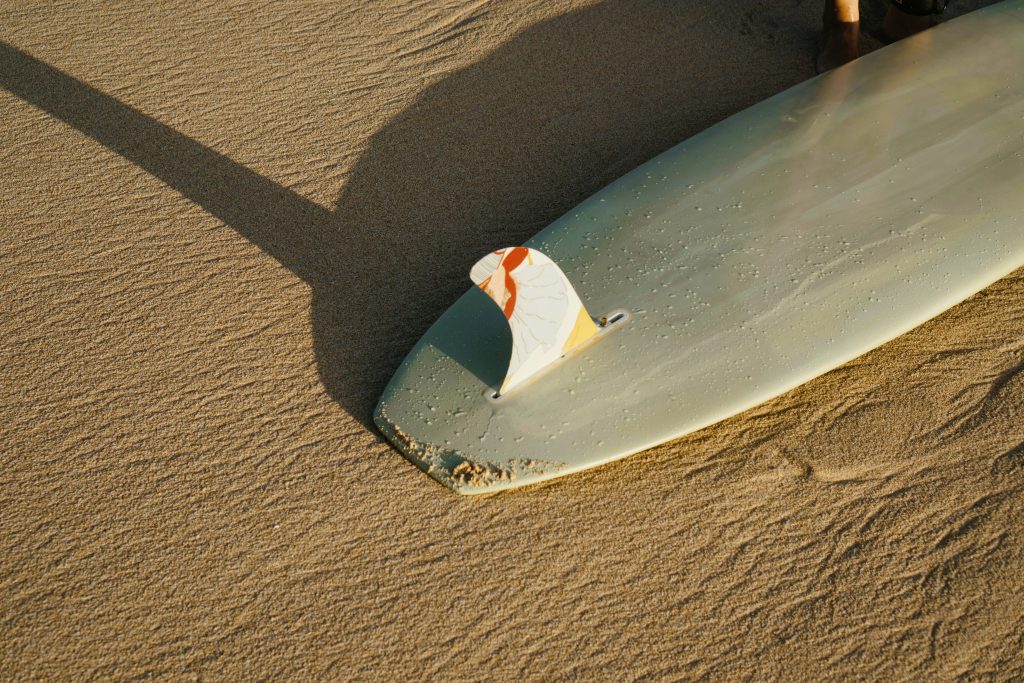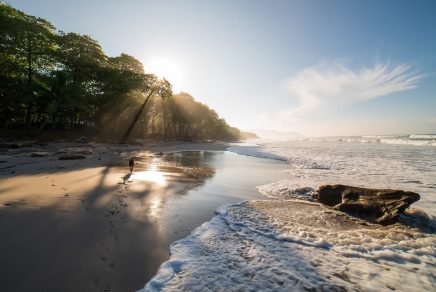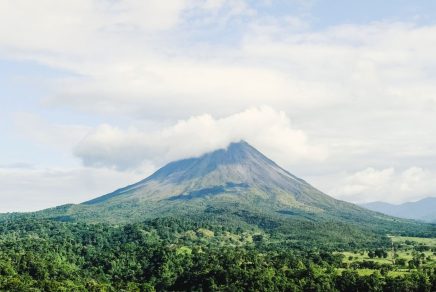Costa Rica, a beautiful Central American country, is world-renowned for its world-class surf and vibrant natural beauty. Since the release of the film Endless Summer II in 1994, surfing in Costa Rica has captivated wave enthusiasts worldwide. With consistent year-round waves, warm water, exotic wildlife, lush vegetation, and a well-established tourism infrastructure, the country lives up to its reputation as a premier surf destination. Beyond its ecological treasures, surfing has become an integral part of Costa Rican culture, blending adrenaline with the laid-back Pura Vida lifestyle.
The challenge lies in narrowing down the numerous and varied surf spots!
Does Costa Rica have good surfing? You bet! Here’s how to prepare.
Costa Rica surfing: Pacific or Caribbean
Both the Pacific side and the Caribbean coast offer something special for surfers, with waves suited for all levels. However, the Nicoya Peninsula, particularly Montezuma and Santa Teresa, stands out as an ideal place for beginners. These spots offer a mix of laid-back vibes and breathtaking sunsets, making them unforgettable surf destinations.
Where to fly into Costa Rica for surfing?
We recommend flying into Liberia airport. From there, you’ll have easy access to the beaches of Guanacaste, known as an ideal place for surfing. This region offers a variety of waves thanks to its coral reefs and numerous surf schools.
Are there surf schools and surf lessons in Costa Rica?
Yes! Numerous surf schools across Costa Rica cater to beginners, offering expert instruction and soft-top surfboards to ease your way into the sport. Lessons are typically conducted on beaches with higher tides and moderate waves, perfect for practicing paddling and catching your first wave.
Are there surfer camps in Costa Rica?
Costa Rica is home to a variety of surf camps for all levels, often including accommodation, meals, and daily lessons tailored to your skills. From the Pacific side to the Caribbean coast, these camps ensure you’ll catch plenty of waves while exploring stunning locales.
Here are some options:
- Witch’s Rock Surf Camp: Great for solo surfers looking to make friends.
- Surf Simply: Ideal for beginners in a stylish environment.
- Surf With Amigas: A women-only camp.
- Dreamsea Surf Camp Costa Rica: Perfect for a wellness-focused week.
- Safari Surf School: Combines surfing with eco-tourism.
- Kalon Surf Resort: Luxurious amenities for a premium experience.
- Rancho Delicioso: a yoga retreat meets substainable farming meets surf school?
What months can you surf in Costa Rica?
The Pacific side has waves year-round, but December to April sees sunny skies and steady swells. For bigger challenges, visit between April and October, when advanced surfers can ride larger swells. The Caribbean coast shines from December to April, offering something special for all surfing levels.
Montezuma and its bohemian atmosphere


To reach the Pacific side of the Nicoya Peninsula, we recommend landing at Daniel Oduber Quirós Airport (Liberia Airport). If you’re closer to the capital, San José, Montezuma can also be reached by boat from Jaco, another iconic surf destination around 1½ hours’ drive from San José.
Montezuma is a timeless village with a relaxed, bohemian atmosphere. Since the 80s, it has attracted hippies and backpackers looking for wild beaches, relaxation, and festive evenings. It’s the perfect place to learn to surf in a peaceful setting. A 40-minute walk to the south of the village is Playa Grande, a little-used beach ideal for beginners thanks to its small, steady waves, beach breaks, and local surf lessons.
What else can you do in Montezuma?
- Relax in a hammock: Enjoy the gentle sound of the waves and the rocky landscape.
- Stroll along the wild beaches: From June to October, watch baby turtles returning to the sea from their refuge.
- Hike to the Montezuma waterfalls: take a refreshing dip in the natural pools.
- Explore the Cabo Blanco reserve: Discover an unspoilt natural environment, perfect for nature lovers.
Santa Teresa or the surfers’ mecca


Around 30 minutes’ drive from Montezuma, via dirt tracks, is Santa Teresa, considered to be the “mecca” for surfing in Costa Rica. This tourist village is structured around a long street bordering the sea, dotted with small inns, hotels, and restaurants that blend harmoniously into the landscape. Here, the powerful waves attract young people eager for thrills and the agility to challenge the impressive rollers.
Santa Teresa offers something special to surfers of all levels. The consistent year-round surf conditions here make it an appealing spot for both beginners and advanced surfers alike.
Unlike Montezuma, where the atmosphere is more bohemian, Santa Teresa attracts a host of young sports enthusiasts, for whom crossing the waves is a feat in itself. The sheer power of the waves is a real treat, even for beginners, who can take advantage of the higher tides to be carried right up to the shore.
What else can you do in Santa Teresa?
- Yoga: Many centres offer yoga sessions, perfect for relaxing after a day in the surf.
- Quad biking or cycling: Explore the surrounding villages.
- Walk along the beaches: Enjoy the scenery that stretches as far as the eye can see.
- Celebrate after dark: Join in the beach parties to extend the day in good spirits.
More of the best surf spots and surfing towns in Costa Rica

Whether you’re a beginner or an experienced surfer, Costa Rica is brimming with beaches and surf destinations perfect for fun and progress at the pace of the waves. The country invites you to immerse yourself in its world-class surf culture, blending relaxation and adrenaline. Pura Vida!
Surfing in Tamarindo
Located on the Nicoya Peninsula, farther north than Montezuma and Santa Teresa, Tamarindo offers excellent waves. However, keep in mind that Playa Tamarindo has a highly touristy vibe, which may feel less authentic compared to other surf spots in Costa Rica.
For a more local experience, head to Playa Langosta, south of Tamarindo. Popular among locals, this spot is not beginner-friendly due to its rocky bottom, but it’s far less crowded.
Alternatively, Playa Grande is known for its lovely rights, making it a great option for catching clean waves.
Surfing in Papagayo
Ollie’s Point is a world-class surf spot! Accessible only by boat, the journey isn’t cheap but is well worth the effort. This destination caters to advanced surfers only, with large, fast rights forming walls that are challenging for beginners.
Surfing in Nosara
Nestled in the heart of Costa Rica’s natural beauty, Nosara is a small village mainly inhabited by expats who embrace the surfing in Costa Rica lifestyle. Its blonde-sand beaches offer smaller waves, perfect for beginners taking surf lessons, but can still reach up to 2 meters during the swell season.
Surfing in Jaco
Located in Puntarenas province, not far from the capital San José, Jaco enjoys optimal conditions for higher tide surfing sessions. For intermediate to expert waves, head to Playa Escondida or Playa Hermosa, an area just a short drive from Jaco.








